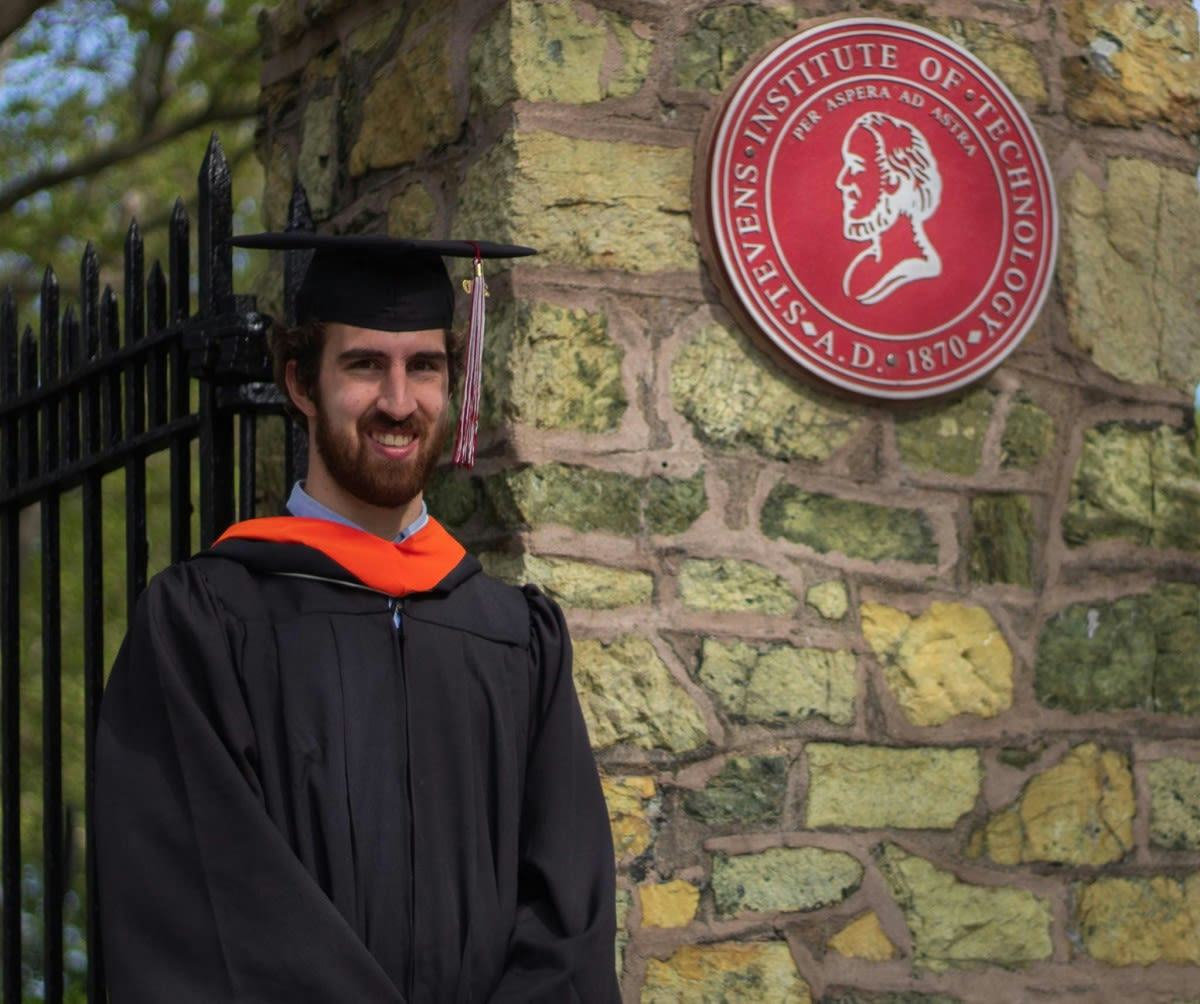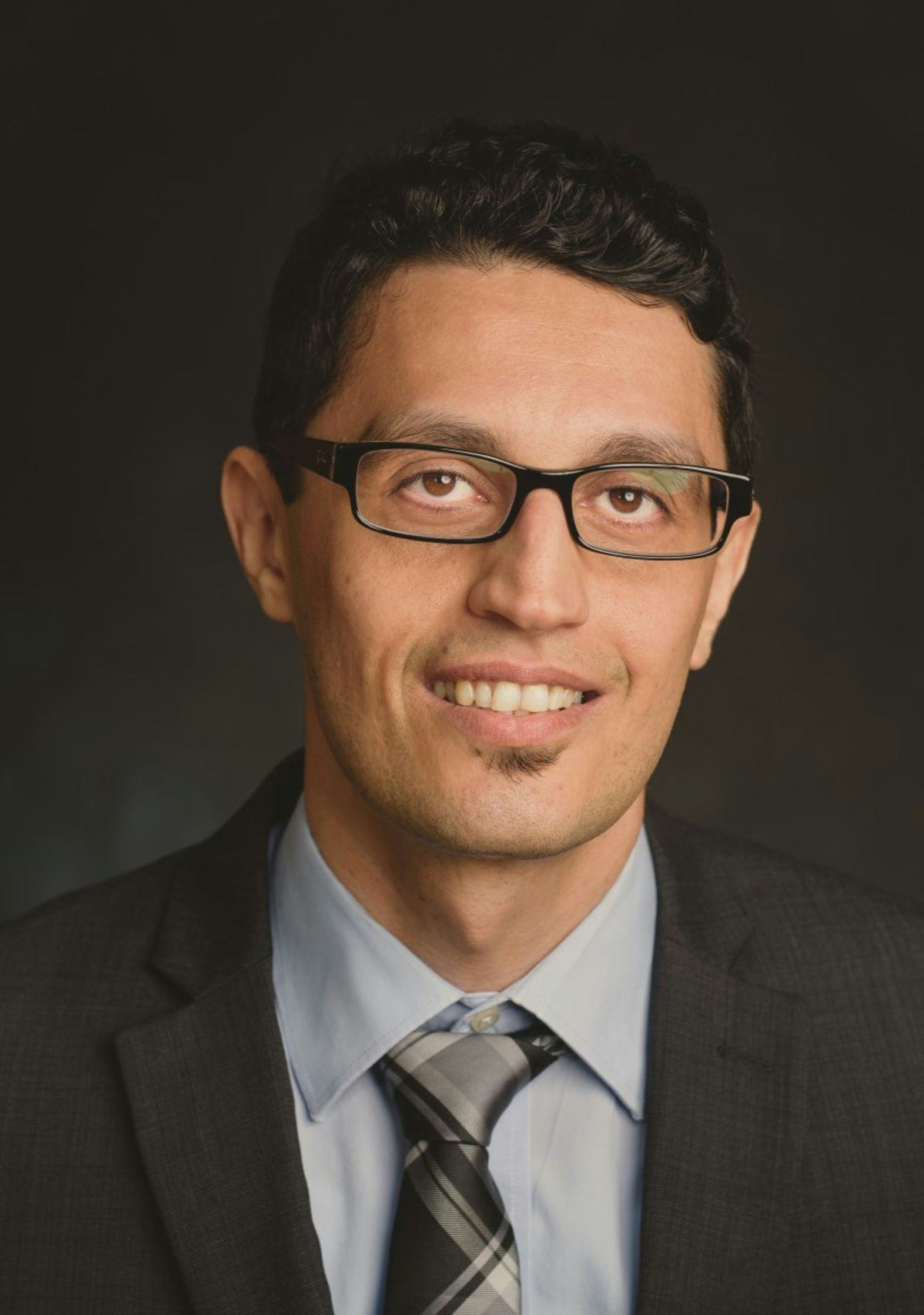Environmental engineer and all-conference swimmer Dan Rosenberger '20 pursues a master's — and accepts a new job — to help protect coastlines and communities
Dan Rosenberger '20 grew up inland, just west of Philadelphia, but he lives for water.
In the pool he consistently excelled during a four-year undergraduate career at Stevens. Rosenberger helped power the men's squad to four consecutive conference titles and was selected as an all-Middle Atlantic Conference (MAC) team athlete in his senior year. The team set a conference record for points in a championship meet in 2020, the final event of his career.
Rosenberger also excelled in the classroom, and was named to the MAC's Winter/Spring Sports Academic Honor Roll.
His Stevens studies and research have focused increasingly on water, as well, helping engineer ways to channel stormwater and protect coastal communities from rising seas and the increasing floods and storm surges created by climate change.
That path has taken him through several significant research projects and internships in the metro New York-New Jersey region — one of which ultimately led to a full-time position offer with a major engineering firm in Boston, which he will begin after completing his master's degree in spring.
"I always wanted to be an engineer, but I wasn't sure what kind I wanted to be until late in high school," he recalls. "When I found Stevens, the combination of academic programs, athletics and location just could not be beat."
Rain gardens, green roofs, community projects
In high school Rosenberger spent plenty of time outdoors as a Boy Scout, swimmer, lifeguard, and through participation in the NCF Envirothon, a national high school competition involving environmental challenges and nature identification tasks in the field.
As an environmental engineering first-year student at Stevens, Rosenberger immediately jumped into hands-on research, assisting student and faculty teams on newly installed green roofs, bioretention planters and rain gardens during the summer following his initial year on campus.
"That got me excited and changed the direction of my studies," he remembers. "Doing experiments on top of the North Building, attempting to increase the quality of water flowing off the green roofs, was fascinating. My interest quickly grew in other aspects of green infrastructure."
As a second-year student, he traveled to England to assist on a three-month research project at the University of Sheffield, studying the potential use of hydrogels — synthetic gels that rapidly absorb water — in green roofs to keep plants consistently hydrated between rainfalls.
In fall of 2019, his final undergraduate year, he joined a Stevens senior design team working a real-world problem for a community on New York's Long Island. The challenge: a pond that overflows during large storms and flood events. The goal: to contain or minimize that flooding through natural and manmade defenses, while also enhancing the pond and its surrounding environment.
"The pond itself had become severely overgrown, to the point where dredging needed to happen to make it usable again," he notes. "But dredging is very expensive, and also requires the management of the heavy metals, pesticides and other contamination that are dredged out."
Using Envision — a set of criteria for sustainable and resilient infrastructure— as a guide, the student team set to work on the challenge.
"Our team proposed a number of interesting solutions for the site, such as the retention and reuse of the dredged soil for asphalt and greenways on-site," says Rosenberger. "We also suggested enhancements to habitat, for instance by repurposing part of the pond as a beneficial wetland where wildlife could return and where sedimentation could occur naturally.
"You will always need some gray solutions in a situation like this one, such as hard flood walls that cannot be made completely green. But the remaining solutions we proposed complemented and mitigated the site in multiple ways."
Natural defenses, life-changing internships
After completing his bachelor's degree in 2020, Rosenberger continued in the civil engineering master's degree program, choosing a specific concentration in water resources.
For his master's thesis project, Rosenberger is currently assisting Stevens ocean and flood modeling expert Reza Marsooli as they investigate reeds, saltgrasses and other vegetation that can be planted into natural barriers in coastal landscapes. Such barriers could diffuse the energy of the increasingly higher and stronger waves that will arrive during future storms, protecting communities.
This emerging concept in green infrastructure is known as a living shoreline, and Stevens is producing a growing body of significant research around it.
"My work involves looking at how we can reduce wave forces on structures such as flood walls or coastal barriers with aquatic vegetation," Rosenberger explains. "There's a lot of research demonstrating how aquatic vegetation can reduce wave heights and storm surge height — but there haven't been follow-up studies to learn whether this reduction in wave heights translates into a reduction of the actual forces acting on the shore."
With Marsooli's guidance, he conducts computer modeling studies comparing the force exerted on a seawall from simulated waves both with and without vegetation protecting the wall.
"Dan's research investigates the benefits of coastal vegetation for mitigating wave loads on seawalls," explains Marsooli. "His work greatly contributes to our ongoing research that aims to understand how natural and nature-based features can be combined with traditional engineering approaches to enhance the resilience of communities and infrastructure to coastal flooding."
Along the way to his master's studies, Rosenberger also applied to, obtained and experienced several internships.
With the UK-based consultancy Mott MacDonald in Iselin, New Jersey, he worked on a wastewater team to address the challenge of combined-sewer overflows. Later he worked virtually with the engineering consultancy Arup, a major designer on green infrastructure projects for New York City's Department of Environmental Protection and other resiliency projects worldwide.
Rosenberger was then offered and accepted a full-time role in Arup's Boston office.
"Near-term, I want to continue this consulting role for Arup. Long-term, though, I may want to return for a doctorate," he concludes. "I am doing a thesis-based master's degree, versus a course-based master's, to keep that option on the table.
"Whether it leads to a different role within the company or to a teaching position, Stevens has helped me both find a new career and also keep my future options open."
Learn more about research in the Department of Civil, Environmental and Ocean Engineering →



